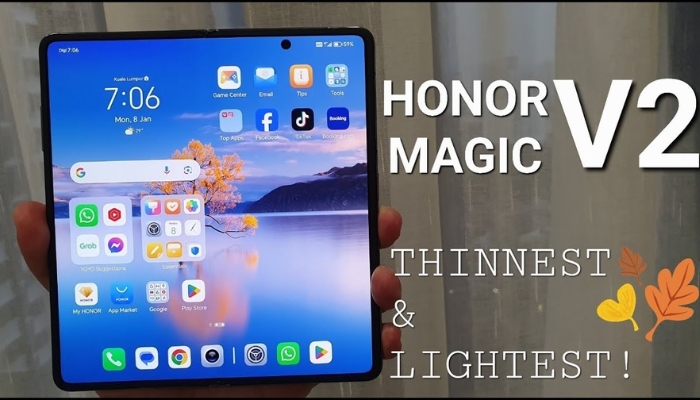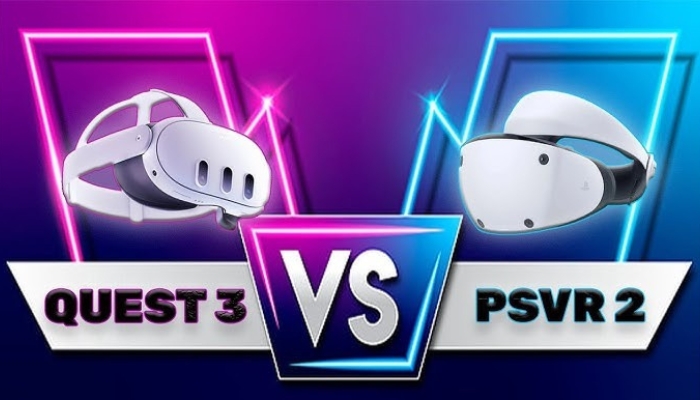
Last updated on April 4th, 2024 at 07:34 am
The super-premium phone-tablet is the thinnest and lightest foldable yet, but it makes compromises on the camera
Honor’s Magic V2 is the most elegantly designed folding phone-tablet to date. When closed, it feels like a regular phone, but it unfolds like a book to reveal a large, luxurious screen.
Initially launched in China last year, the Magic V2 has now arrived in Europe, though its price is far from affordable. Priced at £1,700 (€2,000), it falls between the Samsung Galaxy Z Fold 5 and the slightly cheaper OnePlus Open.
However, it boasts a significant advantage over its competitors: its slim profile. Honor has managed to reduce the size of the hinge and body, eliminating the bulkiness that has plagued folding phones until now. The device’s large and vibrant outer screen features slim bezels and curved edges, providing a familiar feel and functionality of a standard Android phone when closed. When opened into tablet mode, it is a mere 4.8mm thick—equivalent to the thickness of six credit cards—making it incredibly slim.
The internal 7.92-inch screen is slightly larger than its rivals and boasts the same level of brightness, smoothness, and visual appeal. While the crease in the middle is slightly more noticeable than that of the Open, it quickly fades into the background during use.
The hinge is designed to withstand at least 400,000 folds and can support the phone at various angles. However, it does not feel as sturdy as some competitors’ hinges, and the phone lacks water or dust protection.
Specifications
- Main screen: 7.92in (402ppi) 120Hz OLED flexible display
- Cover screen: 6.43in (404ppi) 120Hz OLED
- Processor: Qualcomm Snapdragon 8 Gen 2
- RAM: 16GB
- Storage: 512GB
- Operating system: MagicOS 7.2 (Android 13)
- Camera: 50MP + 50MP ultrawide + 20MP 2.5x tele; 2x 16MP selfie
- Connectivity: 5G, dual sim + esim, USB-C, wifi 7, NFC, Bluetooth 5.3, GNSS
- Water resistance: none
- Dimensions folded: 156.7 x 74 x 10.1mm
- Dimensions unfolded: 156.7 x 145.4 x 4.8mm
- Weight: 237g
Last year’s top Android chip
The Magic V2 is equipped with Qualcomm’s top chip from 2023, the Snapdragon 8 Gen 2, rather than the newer Gen 3 version that began appearing in phones last month. Despite not featuring the very latest technology, it still provides plenty of power for multitasking, gaming, and other tasks, which is impressive given its high price point. The battery life is exceptional, lasting well over six hours with active use of the two screens and three hours on 5G. This results in up to 49 hours between charges, meaning you only need to recharge every two days.
Sustainability
Honor does not specify the expected lifespan of the battery, but it is designed to last for over 500 full charge cycles with at least 80% of its original capacity. The phone is generally repairable by Honor, with full battery replacements priced at £110 and folding screen replacements costing £737.80 out of warranty. The phone also contains recycled plastic, and Honor publishes a breakdown of its environmental impact and offers trade-in schemes.
MagicOS 7.2 lacks polish
The Magic V2’s main drawback lies in its software. It comes with MagicOS 7.2, which is based on Android 13 from 2022, rather than the expected Android 14 for a new device in 2024. Honor commits to providing only four years of Android updates and a total of five years of security updates from the release date, which falls short by at least two full years compared to the standard set by Google, Samsung, and Apple.
MagicOS features some innovative concepts, such as a mode that transforms the phone into a digital desk clock when not in use. However, compared to the best software experiences offered by its competitors, MagicOS feels a bit unrefined. It offers advanced multitasking capabilities, allowing users to have up to four apps on the screen simultaneously: two in split-screen mode and two in smaller, free-floating pop-out windows.
One drawback is that when you tap on a notification for a message, such as an email or WhatsApp, the phone opens the respective app in a mini floating window instead of full screen. While this can be convenient at times, it can also be frustrating, and there’s no way to disable this behavior. For example, I never want Gmail to open like a chat app.
Additionally, the phone comes with preinstalled apps like Booking.com, TikTok, Facebook, Instagram, and WPS Office. Although these apps can be uninstalled, it’s worth noting that for a £1,700 phone, it shouldn’t come with the kind of bloatware typically found on budget devices.
Camera
The Magic V2 features three cameras on the back, one selfie camera on the front, and one on the inside screen.
While both selfie cameras perform well, they are outperformed by the main cameras for photography, which can easily capture selfies using the outside screen as a viewfinder.
The main 50MP camera captures quality photos in various lighting conditions, though it tends to oversaturate colors and often brightens scenes excessively, resulting in reduced contrast and somewhat flat-looking images. The 50MP ultrawide camera performs well in bright scenes, while the 20MP 2.5x telephoto lens generally delivers solid images. However, it lacks significant reach, especially when compared to competitors offering double the optical magnification.
All three cameras struggle in low-light conditions, losing fine detail and sharpness and becoming increasingly inconsistent at night. There is also a noticeable color difference between the ultrawide and the other two cameras, which is disappointing considering the device’s price.
While these issues are not deal-breakers, Honor has some ground to cover to match the performance of the best cameras on the market.
Price
The Honor Magic V2 is priced at £1,699.99 (€1,999.90).
In comparison, the Samsung Galaxy Z Fold 5 is priced at £1,749, the Google Pixel Fold is also priced at £1,749, and the OnePlus Open is priced at £1,599.
Verdict
The Honor Magic V2 impresses with its exquisite hardware design, seamlessly transitioning from a regular phone when folded to revealing a large, hidden screen inside.
However, its software falls short of expectations compared to competitors, lacking the same level of polish and capability. Moreover, it is not supported for as long. The absence of a water-resistance rating raises durability concerns, and the camera performance is somewhat lacking in certain areas. While none of these issues are insurmountable, many could be addressed with updates. Nevertheless, they are disappointing for a device in this price range, especially when more affordable alternatives outperform it in these aspects.




